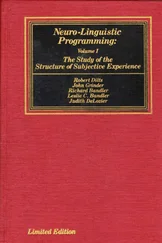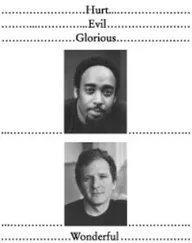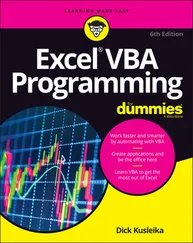Any similarity to function returns ends there because where you return is some place completely different from where a normal function call returns. (You end up in an appropriate part of the code—called an exception handler—that might be far removed from where the exception was thrown.) In addition, any local objects created by the time the exception occurs are destroyed. This automatic cleanup of local objects is often called "stack unwinding." .
In addition, you can throw as many different types of objects as you want. Typically, you’ll throw a different type for each category of error. The idea is to store the information in the object and in the name of its class so that someone in a calling context can figure out what to do with your exception .
As mentioned earlier, one of the advantages of C++ exception handling is that it allows you to concentrate on the problem you’re actually trying to solve in one place, and then deal with the errors from that code in another place .
If you’re inside a function and you throw an exception (or a called function throws an exception), the function exits in the process of throwing. If you don’t want a throwto leave a function, you can set up a special block within the function where you try to solve your actual programming problem (and potentially generate exceptions). This block is called the try block because you try your various function calls there. The try block is an ordinary scope, preceded by the keyword try: .
try {
// Code that may generate exceptions
}
If you check for errors by carefully examining the return codes from the functions you use, you need to surround every function call with setup and test code, even if you call the same function several times. With exception handling, you put everything in a tryblock and handle exceptions after the tryblock. Thus, your code is a lot easier to write and easier to read because the goal of the code is not confused with the error checking .
Of course, the thrown exception must end up some place. This place is the exception handler , and you need one exception handler for every exception type you want to catch. Exception handlers immediately follow the tryblock and are denoted by the keyword catch: .
try {
// Code that may generate exceptions
} catch(type1 id1) {
// Handle exceptions of type1
} catch(type2 id2) {
// Handle exceptions of type2
} catch(type3 id3)
// Etc...
} catch(typeN idN)
// Handle exceptions of typeN
}
// Normal execution resumes here...
The syntax of a catchclause resembles functions that take a single argument. The identifier ( id1, id2, and so on) can be used inside the handler, just like a function argument, although you can omit the identifier if it’s not needed in the handler. The exception type usually gives you enough information to deal with it .
The handlers must appear directly after the tryblock. If an exception is thrown, the exception-handling mechanism goes hunting for the first handler with an argument that matches the type of the exception. It then enters that catchclause, and the exception is considered handled. (The search for handlers stops once the catchclause is found.) Only the matching catchclause executes; control then resumes after the last handler associated with that try block .
Notice that, within the tryblock, a number of different function calls might generate the same type of exception, but you need only one handler .
To illustrate using tryand catch, the following variation of Nonlocal.cppreplaces the call to setjmp( )with a tryblock and replaces the call to longjmp( )with a throwstatement .
//: C01:Nonlocal2.cpp
// Illustrates exceptions
#include
using namespace std;
class Rainbow {
public:
Rainbow() { cout << "Rainbow()" << endl; }
~Rainbow() { cout << "~Rainbow()" << endl; }
};
void oz() {
Rainbow rb;
for(int i = 0; i < 3; i++)
cout << "there's no place like home\n";
throw 47;
}
int main() {
try {
cout << "tornado, witch, munchkins...\n";
oz();
}
catch (int) {
cout << "Auntie Em! "
<< "I had the strangest dream..."
<< endl;
}
} ///:~
When the throwstatement in oz( )executes, program control backtracks until it finds the catchclause that takes an intparameter, at which point execution resumes with the body of that catchclause. The most important difference between this program and Nonlocal.cppis that the destructor for the object rbis called when the throwstatement causes execution to leave the function oz( ) .
There are two basic models in exception-handling theory: termination and resumption. In termination (which is what C++ supports), you assume the error is so critical that there’s no way to automatically resume execution at the point where the exception occurred. In other words, "whoever" threw the exception decided there was no way to salvage the situation, and they don’t want to come back .
The alternative error-handling model is called resumption , first introduced with the PL/I language in the 1960s [2] Visual Basic supports a limited form of resumptive exception handling with its ON ERROR facility.
.Using resumption semantics means that the exception handler is expected to do something to rectify the situation, and then the faulting code is automatically retried, presuming success the second time. If you want resumption in C++, you must explicitly transfer execution back to the code where the error occurred, usually by repeating the function call that sent you there in the first place. It is not unusual, therefore, to place your tryblock inside a whileloop that keeps reentering the tryblock until the result is satisfactory .
Historically, programmers using operating systems that supported resumptive exception handling eventually ended up using termination-like code and skipping resumption. Although resumption sounds attractive at first, it seems it isn’t quite so useful in practice. One reason may be the distance that can occur between the exception and its handler; it is one thing to terminate to a handler that’s far away, but to jump to that handler and then back again may be too conceptually difficult for large systems on which the exception can be generated from many points .
When an exception is thrown, the exception-handling system looks through the "nearest" handlers in the order they appear in the source code. When it finds a match, the exception is considered handled and no further searching occurs .
Читать дальше












